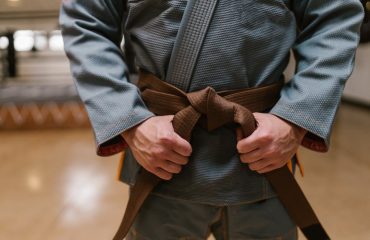
In the world of self-defense, grappling stands out as a critical skill set that empowers individuals to protect themselves in close-combat situations effectively. At NOCO Jiu-Jitsu and Self-Defense, we believe in the power of grappling not just as a martial art, but as a cornerstone of a comprehensive self-defense strategy. Our philosophy centers on building confidence through mastery, ensuring that every student learns how to grapple with assurance and skill. This approach is rooted in the understanding that true self-defense capability comes from a deep knowledge of techniques and the confidence to apply them under pressure. By focusing on the fundamentals and progressively building skills, we prepare our students to face any challenge with confidence and competence.
Understanding the Basics of Grappling
Grappling involves controlling an opponent through techniques that leverage body position, movement, and force. Understanding the fundamentals of leverage and control is essential for effective self-defense, forming the bedrock upon which all advanced techniques are built. Mastering the basics of grappling provides a solid foundation for any self-defense scenario, emphasizing the need to control the situation before applying any finishing techniques. This foundational knowledge is critical, as it allows practitioners to maintain safety and effectiveness in real-world defense situations.
Here are key elements that underline the importance of grappling fundamentals:
- Position Before Submission: Prioritizing position ensures control over the opponent, making it easier to apply submissions or escape dangerous situations.
- Leverage: Utilizing the mechanical advantage through leverage allows a smaller person to control a larger opponent effectively.
- Balance and Base: Maintaining a strong base and understanding balance are crucial for both offensive and defensive maneuvers.
- Guard Position: Mastery of the guard position enables practitioners to defend themselves effectively from the ground, offering various options for control and attack.
- Escapes and Defense: Fundamental escapes from common holds and positions are vital, ensuring one can protect themselves and create opportunities to counterattack.
Through concentrating on these essential areas, Jiu-Jitsu practitioners foster an all-encompassing knowledge of how to control physical attacks. This method not only improves self-defense skills but also cultivates a level of self-assurance applicable to many elements of living. By honing these foundational competencies, BJJ students learn how to effectively handle aggressive situations while gaining broader life lessons on managing confrontation confidently.
Building a Strong Foundation with NOCO Jiu-Jitsu
At NOCO Jiu-Jitsu, our foundational training goes beyond the physical aspects of grappling to instill core principles that significantly enhance self-defense capabilities. This approach is rooted in the belief that a deep understanding of technique, leverage, and positioning is far more effective than relying solely on physical strength. By prioritizing technique over brute force and agility over sheer power, we equip our students with the skills to control and neutralize threats efficiently, regardless of the size or strength of their opponent. This emphasis on skill and strategy ensures that our practitioners can approach any self-defense situation with confidence, knowing they have the tools and knowledge to protect themselves effectively. Our curriculum is designed to build these capabilities from the ground up, ensuring that every student develops a comprehensive skill set that is both versatile and adaptable to real-world scenarios.
Techniques for Effective Grappling
Mastering effective grappling techniques is essential for anyone starting on their path in Brazilian Jiu-Jitsu, especially when focusing on self-defense. At NOCO Jiu-Jitsu, we emphasize a selection of foundational techniques that are crucial for beginners to learn, ensuring they can defend themselves in various situations. Understanding how to transition between these techniques seamlessly is key to developing a fluid and adaptable defense strategy.
Here are some of the core techniques and principles we focus on:
- Guard Position – The guard is a fundamental defensive position where you control an opponent from your back, using your legs. It’s vital for protecting yourself and setting up submissions.
- Application: Effective in managing distance and controlling an aggressor, preventing them from causing harm.
- Escape Techniques – Learning how to escape from common holds and positions ensures that you can break free from an attacker’s control.
- Application: Essential for self-defense situations where you need to disengage and create space between you and the attacker.
- Sweeps – These techniques allow you to reverse a disadvantaged position, moving from the bottom to a top position of control.
- Application: Sweeps are crucial for turning the tables on an attacker, shifting from defense to a more dominant position.
- Submissions from Guard – Submissions such as armlocks and chokes can be effectively applied from the guard position.
- Application: Useful for neutralizing a threat without the need for excessive force, focusing on control and leverage.
- Positional Control – Understanding how to control and maintain dominant positions is key to effective grappling.
- Application: In self-defense scenarios, controlling an attacker minimizes their ability to inflict harm, allowing for strategic responses.
By focusing on these techniques, beginners can develop a solid foundation in grappling, enhancing their self-defense capabilities. Transitioning smoothly between positions and techniques ensures that practitioners can adapt to changing situations, maintaining control and safety in self-defense scenarios.
Enhancing Physical Conditioning for Grappling
Grappling requires essential qualities like strength, agility, and endurance. Success in grappling hinges not just on technical proficiency but also on physical aptitude. A comprehensive conditioning regimen is crucial, fostering the strength to dominate opponents, agility for swift reactions, and endurance for sustained performance in any scenario, be it a match or self-defense encounter.
Here are key components of an effective conditioning program for grapplers:
- Strength Training: Focus on compound movements such as squats, deadlifts, and presses to build functional strength that translates directly to grappling performance.
- Agility Drills: Incorporate ladder drills, cone drills, and short sprints to enhance your ability to move quickly and efficiently on the mats.
- Endurance Workouts: Engage in cardiovascular activities like running, swimming, or cycling to improve overall stamina, ensuring you can grapple effectively for longer periods.
- Core Exercises: Strengthen your core with planks, Russian twists, and leg raises to improve balance and stability, which are crucial for maintaining control in grappling.
- Flexibility Routines: Include stretching or yoga sessions in your training to increase flexibility, reducing the risk of injuries and allowing for a greater range of motion during grappling.
By integrating these elements into your training regimen, you can significantly enhance your physical conditioning, providing a solid foundation upon which to build your grappling skills. Improved physical fitness not only boosts your grappling abilities but also increases your confidence on the mats, knowing you have the strength, agility, and endurance to face any challenge.
Mental Preparation and Confidence Building
The psychological aspects of self-defense are as important as the physical ones. Strategies for maintaining calm and building confidence in stressful situations are crucial for effective self-defense. Understanding and mastering the mental game is key to applying self-defense techniques effectively under pressure. Confidence doesn’t just happen; it’s built through consistent training, mental preparation, and a positive mindset.
Here are several strategies to enhance mental preparation and confidence:
- Visualization: Regularly visualize successful defense scenarios to mentally prepare for real-life situations. This practice helps in reinforcing technique application and boosts confidence.
- Breathing Techniques: Learn and practice breathing techniques to maintain calmness. Controlled breathing not only helps in reducing stress but also improves focus during high-pressure situations.
- Positive Reinforcement: Engage in positive self-talk and affirmations. Remind yourself of your training, strength, and ability to handle situations, which can significantly boost confidence.
- Scenario Training: Participate in scenario-based training to simulate real-life situations. This type of training enhances decision-making skills and prepares you mentally for unexpected encounters.
- Mindfulness and Meditation: Incorporate mindfulness and meditation into your routine to improve focus and mental clarity. These practices aid in managing stress and anxiety, contributing to a stronger mental state for self-defense.
Through concentrating on these psychological tactics, practitioners can build a resilient mental foundation to complement their physical preparation, guaranteeing they are both equipped and self-assured in their capacity to protect themselves in any scenario. Implementing these mindset strategies enables students to foster the inner resolve and composure necessary to effectively apply their defensive skills when confronted with adversity.
Practical Self-Defense Strategies
Adapting grappling skills to real-life scenarios is key. In real-world confrontations, the ability to remain calm and use BJJ techniques appropriately can make a significant difference. It’s not just about knowing the moves but understanding when and how to apply them to neutralize threats without escalating violence unnecessarily.
Here are some practical strategies and tips to enhance your self-defense skills through grappling:
- Maintain Awareness: Always be aware of your surroundings and the behavior of those around you. This can help you anticipate potential threats and avoid dangerous situations before they escalate.
- Control the Distance: Use your grappling knowledge to control the distance between you and an aggressor. Keeping them at bay or closing the distance can prevent them from using strikes effectively.
- Secure a Safe Grip: If a confrontation is unavoidable, secure a grip that allows you to control the situation. This could mean grabbing a wrist to prevent a strike or using a clinch to control their movement.
- Stay Balanced: Balance is crucial in both offense and defense. Work on maintaining your balance while disrupting your opponent’s, making it harder for them to attack effectively.
- Escape and Evade: The primary goal in a self-defense situation is to escape harm. Use your grappling skills to disengage safely and create opportunities to exit the situation.
By focusing on these strategies, practitioners can leverage their grappling skills to protect themselves effectively in various scenarios. The emphasis at NOCO Jiu-Jitsu is on practical, real-world applications of BJJ, ensuring that students are not just skilled on the mats but prepared for any challenges they might face outside the academy.
The Role of Sparring in Learning to Grapple
Sparring sessions are invaluable for enhancing learning. Through these controlled combat scenarios, students can apply techniques in real-time, experiencing the dynamic flow of grappling with varying levels of resistance. This practical application is crucial for understanding the effectiveness of different moves and for developing the adaptability needed in unpredictable self-defense situations.
Here are key points that highlight the importance of sparring in the learning process:
- Immediate Feedback: Sparring provides immediate feedback on the effectiveness of techniques, allowing students to adjust and refine their skills on the spot.
- Real-World Application: It simulates real-world scenarios, helping students to understand how to apply techniques under pressure and in less predictable environments.
- Adaptability and Strategy: Engaging with different partners develops adaptability and strategic thinking, as each opponent presents unique challenges and styles.
- Conditioning and Endurance: Sparring sessions improve physical conditioning and endurance, essential attributes for prolonged self-defense situations.
- Community Learning: They foster a sense of community and mutual growth, as students learn not only from their own experiences but also from observing others.
By incorporating these practices into training, students at NOCO Jiu-Jitsu not only learn how to grapple effectively but also build the confidence and resilience necessary for self-defense. Each sparring session is an opportunity for growth, offering insights that are critical for the development of a well-rounded grappler.
NOCO Jiu-Jitsu’s Community and Support System
At NOCO Jiu-Jitsu and Self-Defense, we pride ourselves on creating a training environment that goes beyond just teaching techniques; we build a community where every member feels valued and supported. Our belief is that the experience in martial arts is not just about individual achievement but about growing together as a family. This sense of belonging strengthens our resolve to face challenges, both on the mats and in our daily lives, fostering a deep-seated confidence that transcends the dojo. Our instructors and senior students actively mentor newer members, ensuring that everyone, regardless of their skill level, receives the guidance and encouragement needed to progress. This collaborative atmosphere is what makes our academy a place where growth and confidence flourish.
Preparing for Your First Class
Stepping into your first grappling class can be both exciting and a bit daunting. To ensure you’re ready and can make the most out of the experience, here are some key preparations to consider, focusing on what to expect and how to ready yourself both physically and mentally:
-
- Familiarize Yourself with Basic Terms: Before attending, it might help to learn some basic BJJ terminology. Knowing the names of fundamental positions and moves can make it easier to follow along during instruction.
- Physical Preparation:
- Engage in general physical conditioning. While specific strength is not a prerequisite, having a basic level of fitness can help.
- Stretch regularly in the days leading up to your class to improve flexibility, which is crucial for grappling.
- Mental Preparation:
- Approach your first class with an open mind. Be ready to learn and accept that grappling involves a steep learning curve.
- Set realistic expectations. Understand that mastery takes time, and every practitioner starts as a beginner.
- Hydration and Nutrition: Make sure to hydrate well before class and have a light, nutritious meal a couple of hours beforehand. This will ensure you have the energy needed for the session without feeling too full.
- Gear and Attire: Wear comfortable, fitting athletic clothing if a GI is not required for your first class. Also, bring a water bottle and a small towel.
By preparing in these ways, you’ll be set to embark on your grappling adventure with confidence, ready to absorb new knowledge and skills. Remember, every expert grappler once started as a beginner, and the first step is showing up ready to learn.
Taking the Next Step: Joining NOCO Jiu-Jitsu
At NOCO Jiu-Jitsu and Self-Defense, we pride ourselves on providing a diverse range of programs and classes designed to meet the unique needs and goals of each student. Whether you’re a complete beginner looking to learn the basics of self-defense, or an experienced practitioner seeking to refine your grappling skills, we have the right class for you. Our experienced instructors work closely with each student to identify their goals and recommend the best path forward, ensuring a personalized learning experience that maximizes growth and development.
Choosing the right class is crucial for your development in Brazilian Jiu-Jitsu and self-defense. Our guidance process involves an assessment of your current skill level, understanding your personal goals, and matching you with a program that challenges you while providing the support you need to succeed. This tailored approach helps students progress at their own pace, building confidence and competence on the mats. With classes ranging from fundamental techniques to advanced competitive training, NOCO Jiu-Jitsu and Self-Defense is committed to helping every student achieve their self-defense goals through the art of grappling.
Why NOCO Jiu-Jitsu is Your Partner in Self-Defense
NOCO Jiu-Jitsu’s unique approach to grappling and self-defense sets us apart. We invite readers to take the next step in their self-defense endeavor, offering personalized training and guidance. Our methodology emphasizes not only the physical techniques of grappling but also the strategic thinking and mental resilience that are crucial in self-defense situations. This holistic approach ensures that our students are not just physically prepared to defend themselves but are also mentally equipped to handle the stress and unpredictability of real-life confrontations. By joining NOCO Jiu-Jitsu, you gain access to a comprehensive training program that addresses all aspects of self-defense, from the technical to the psychological, tailored to meet your individual needs and goals.
Grappling is more than just techniques; it is a path to confidence and strength. NOCO Jiu-Jitsu and Self-Defense is devoted to empowering people with the assurance and abilities to effectively defend themselves. Join us to master the art of grappling and take charge of your self-protection skills. Our training transcends physical methods, ingraining a mentality of resilience and strategic thinking essential in any self-defense situation. By focusing on practical, real-life applications, NOCO Jiu-Jitsu makes sure students not only have proficient techniques but also comprehend when and how to utilize them effectively. This holistic self-defense training nurtures a supportive environment where every student can develop, learn, and become more self-assured in their capabilities to safeguard themselves and loved ones. Join us to master grappling and take control of your self-defense abilities.


![[Downloader.la]-65f181f4cdeca](https://b3007865.smushcdn.com/3007865/wp-content/uploads/2024/03/Downloader.la-65f181f4cdeca-370x240_c.jpg?lossy=1&strip=1&webp=1)

